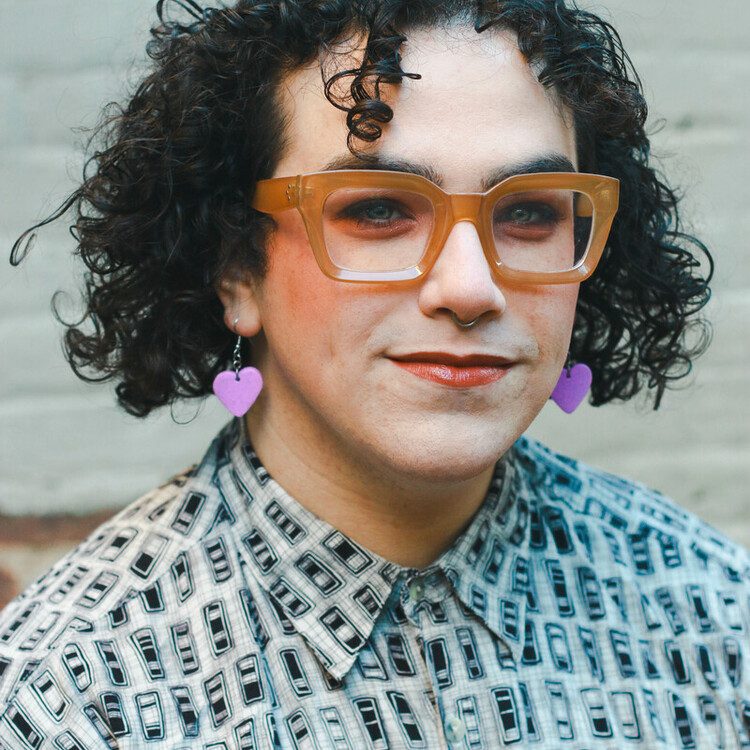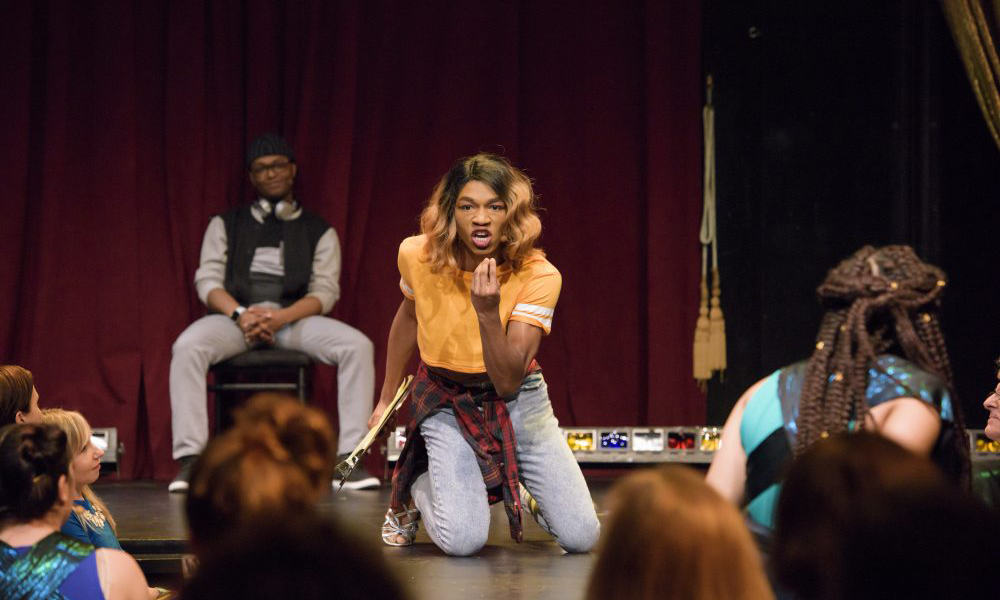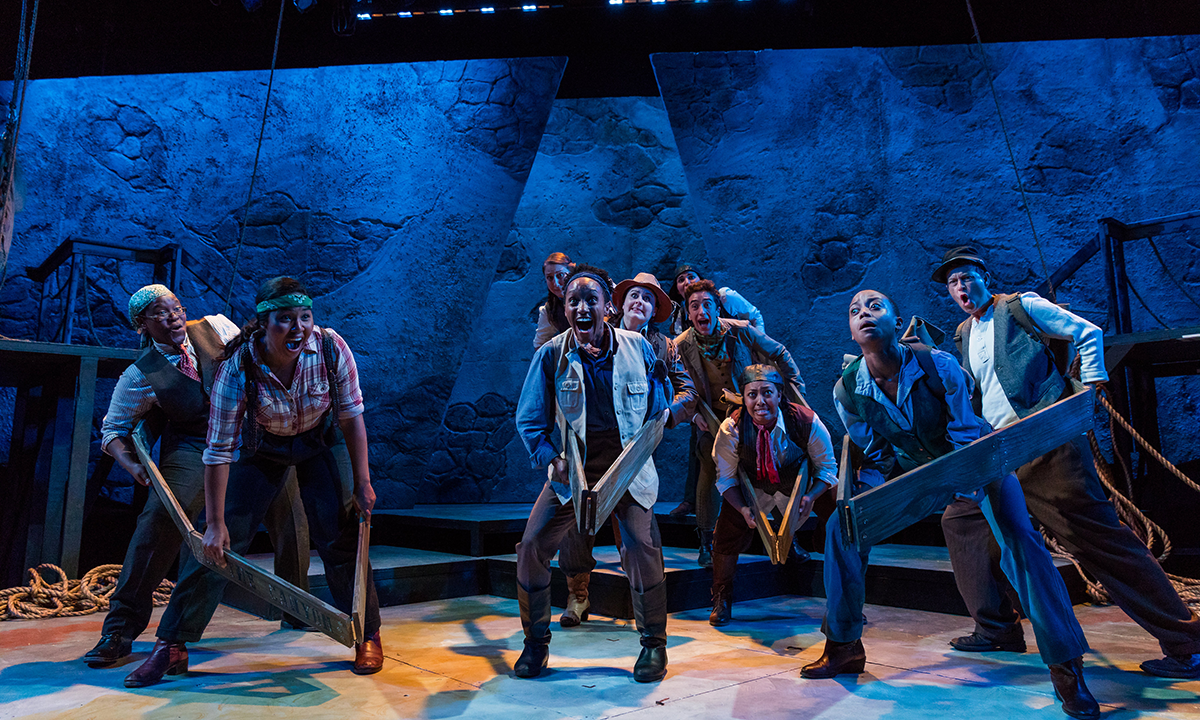Train Everyone. All Aboard!
When a trans person is hired, they suddenly become the unpaid cultural consultant for the production. But “educate the production team on the Trans Experience and how to interact with trans people” likely isn’t part of their job description. If you’re missing some information in order to produce a particular play, you’ve skipped something crucial during the planning process, and it’s not on the token trans person to do that work for you.
Instead, train everyone from the top down and all around: administrators, executive directors, designers, technicians, front of house staff, and board members. Beyond being an HR concern, this is about growing in the ways you interact and live alongside those around you.
If your front of house staff or welcome speeches greet everyone with “ladies and gentlemen,” you’ve immediately shown trans people weren’t thought of during the process.
If your front of house staff or welcome speeches greet everyone with “ladies and gentlemen,” you’ve immediately shown trans people weren’t thought of during the process. Should non-binary people plug their ears? Listen twice as hard? There are so many other options you can use: “Good evening,” “everybody,” “folks,” “friends.” You’re artists, get creative.
Costuming is another area that needs reevaluation. It often relies on binary thinking of male vs. female bodies. Creating a safe and productive environment between staff and actors starts at the very beginning of the costuming process, even before sketches are made. Ask actors what items they are or aren’t comfortable in beforehand. Don’t wait until the pieces are already bought or built, which might leave an actor in an uncomfortable situation. Instead, initiate the conversation early and often.
Organizations like StageSource are already out there with resources and guides to help with training. And this isn’t to say you can never ask your trans coworker a question ever again. If it’s an informal—and appropriate—discussion between friends during a ten, then go ahead. In formal settings, there are quite a few trans theatremakers out there who are trained and even happy to do this sort of cultural education, but if an institution is going to rely on them to provide professional training, they need to be paid for their expertise and time.
Stand Up for Us
Too often, trans people are the only trans person in the room, sometimes even the first openly trans person a company has hired. This can make them feel like a lab rat being vigilantly watched, like they have to act as the perfect example of the trans community. This can lead to a fear of speaking out. If I keep correcting people am I going to be labeled as the “problem actor”? If they don’t have a good experience with me, maybe they won’t want to hire a trans person again.
Cis theatremakers: speak up during introductions if people aren’t saying pronouns. Correct co-workers when they misgender or deadname someone. Encourage a culture of “calling in” and speak up if your friends, peers, and supervisors make questionable or transphobic statements. And if you make a mistake or someone corrects you, don’t make a big deal about it! Creating a scene calls uncomfortable focus to the trans person and makes the moment about your feelings rather than correcting a mistake. It doesn’t need to derail the conversation. You don’t need to give a lengthy story about how you get it because you worked with a trans person in 2013. Just correct yourself, maybe give a quick “sorry” if the moment calls for it, and move on.
Ensure there are literal physical places in your buildings where trans people feel safe. Before stage managers and wardrobe assume to partition actors into binary dressing rooms (men and women), ask the actors where they would feel comfortable doing costume changes. These conversations should happen well before tech. As a general rule, private options for changing areas should always be available. When in doubt, choose the option that allows actors—trans or otherwise—agency over their bodies. It is important that they feel safe in these spaces in order to produce their best work.
It is up to every single one of us to effect change to make the theatre community more inclusive—and this goes beyond gender-neutral restrooms.
Tell Trans Stories by Trans People
There are plenty of resources for finding scripts to produce. You don’t have to shadow New York and the big Off-Broadway theatre companies to plan seasons—there are trans writers in your local communities creating exciting work. Organizations like the New England New Play Alliance can help connect you. New Play Exchange has a database of over twenty-five thousand scripts that you can filter for LGBTQ themes, characters, or author identities. The Kilroys curates lists of underproduced new works by women, trans, and gender non-conforming playwrights. The Non-Binary Monologues Project showcases work specifically for non-binary actors.
While attending plays or writing script evaluations, it’s important to remember that work by a member of any minority community may differ in form or style than what you are used to producing. Traditional American theatre statistically skews white, cisgender, and technically built on mid-century naturalist drama with a touch of memory play abstraction at the end of act one. Plenty of those plays are great, but inclusion doesn’t mean just putting trans people into them. Queer art is more than just art with queer characters, it pushes boundaries and standard accepted form.
If you’re a director developing your production concept, take some time to consider how you can incorporate diverse genders into your casting for every single production—not just the ones with queer themes or writers. Notice if you always assume characters are cis (white, straight, able-bodied…) unless otherwise specified. It shouldn’t take a trans person arriving in an audition room to think about trans people as a possibility in the world of your play.
And you have to go beyond switching up only smaller ensemble roles or pigeonholing trans and non-binary actors as comic relief stock characters or depressed and doomed for tragedy. “Genderbending” Feste in Twelfth Night has been done and overdone—give us a genderfluid Rosalind in As You Like It instead. Trans actors have the same ability as cis actors to play the roles they are called upon to play, they deserve the chance to take on complex and nuanced roles. Be specific about why and how you cast trans and nonbinary bodies on stage. Think of the greater story you are telling and the stereotypes you are perpetuating or, better yet, countering.






Comments
The article is just the start of the conversation—we want to know what you think about this subject, too! HowlRound is a space for knowledge-sharing, and we welcome spirited, thoughtful, and on-topic dialogue. Find our full comments policy here